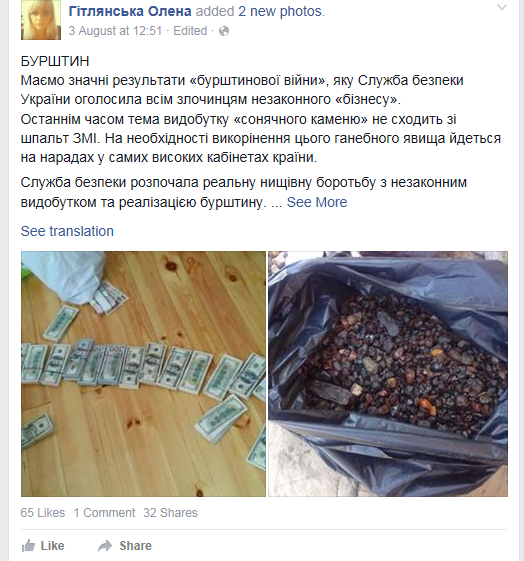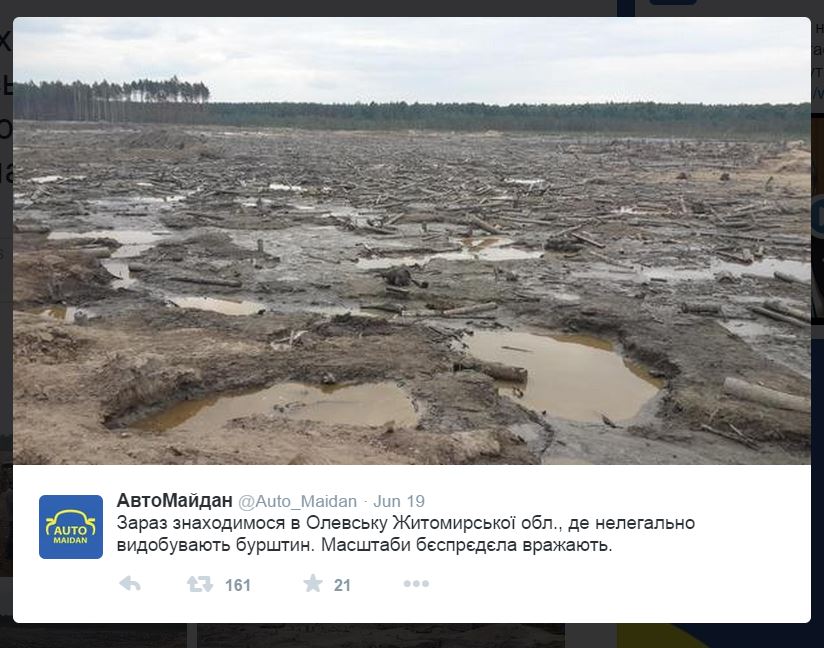Anton Gerashenko, an advisor to Ukraine's Interior Minister, announced online that police had confiscated 2.6 tons of the fossilized resin in the north-western region of Rivne, which borders Belarus.
Gerashenko called the mining a “scheme to rob the Ukrainian people with the help of the judicial system, and corrupt law enforcement officials.”
Elena Hitlyanska, an SBU spokesperson, also posted images of seized amber and cash online, saying the SBU had seized more than 100kg of amber in the past few weeks.
In one operation, in the vicinity of scandal hit regional town Olevsk, 23 kg of amber and US$ 230,000 cash were found in the possession of one unnamed businessman alone, she revealed.
Activists from the protest group AutoMaidan travelled to the small north-western town on June 19 to protest illegal amber mining, publishing photographs of environmental damage they said had been caused by the practice.
OCCRP reported in July that Ukrainian President Petro Poroshenko had issued a two-week ultimatum to local officials to end the illegal amber mining trade, which he said was run with the connivance of corrupt officials and police.
If they failed, Poroshenko said he’d drive there himself to sort it out.
In November 2014, an investigation by one Ukrainian newspaper, Mirror of the Week, revealed that Ukraine loses as much as US$ 350,000 a day through the trade, since illegally mined amber is sold to foreign buyers at far less than the global market price.
Amber is a valuable fossilised tree resin, golden in color, that is used for jewellery and decorative art around the world.
It has an especially rich history in eastern Europe; the Russian Czars possessed a legendary and priceless amber room which was stolen from St. Petersburg by Nazis during the Second World War.
Its whereabouts are still unknown.






